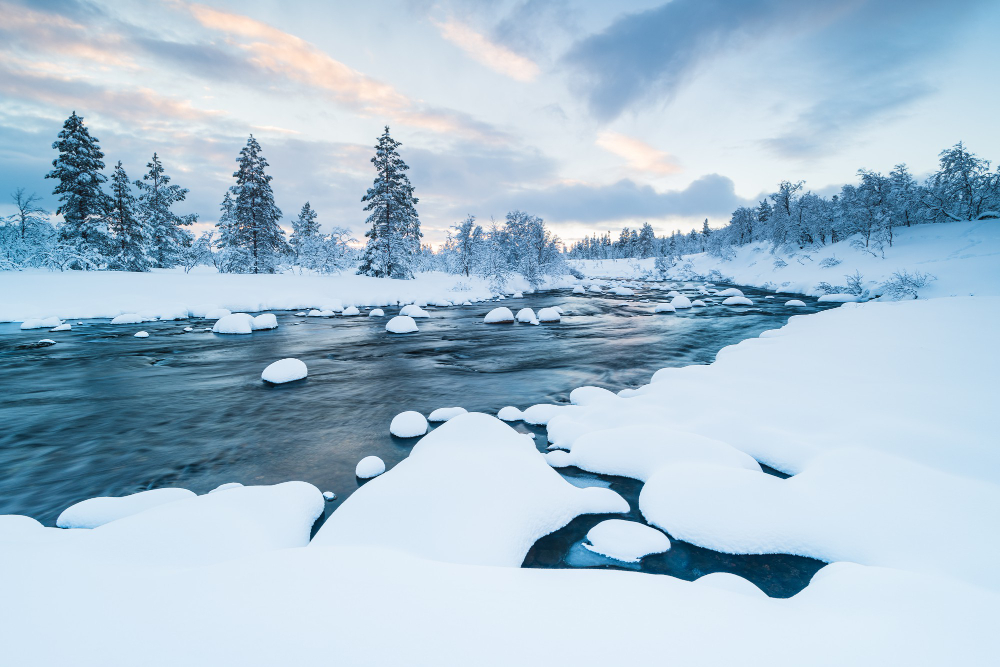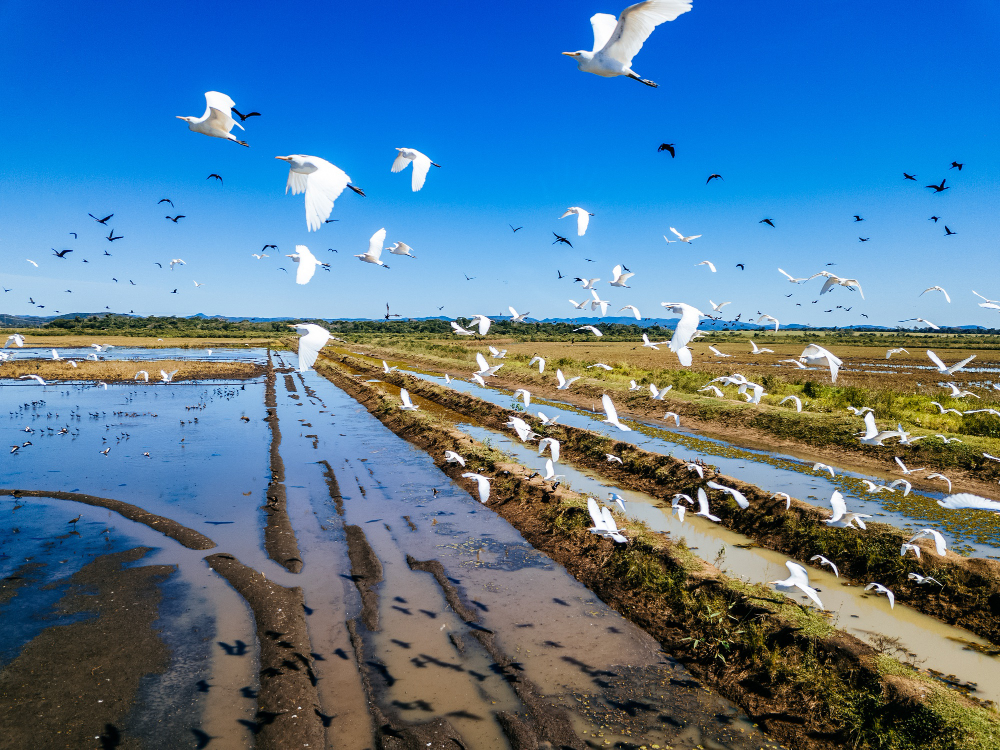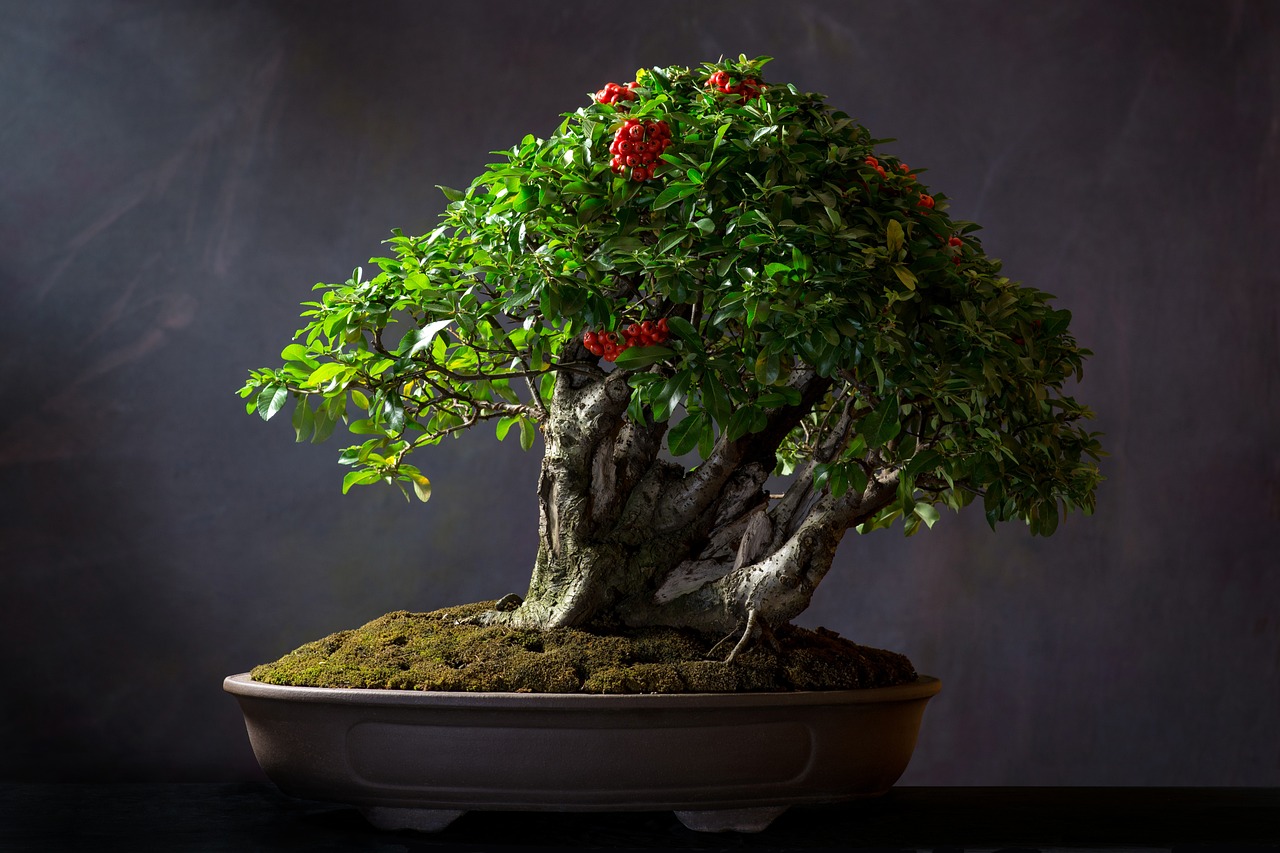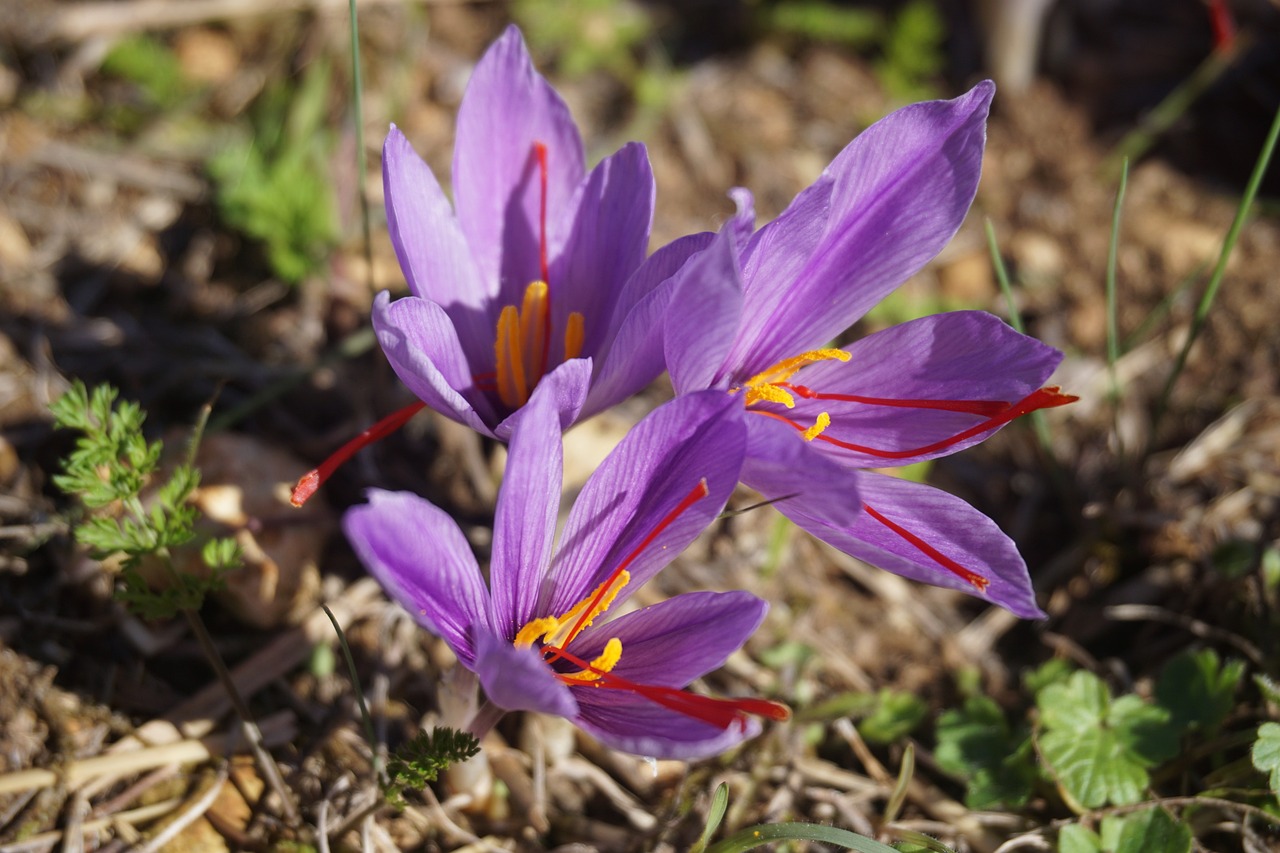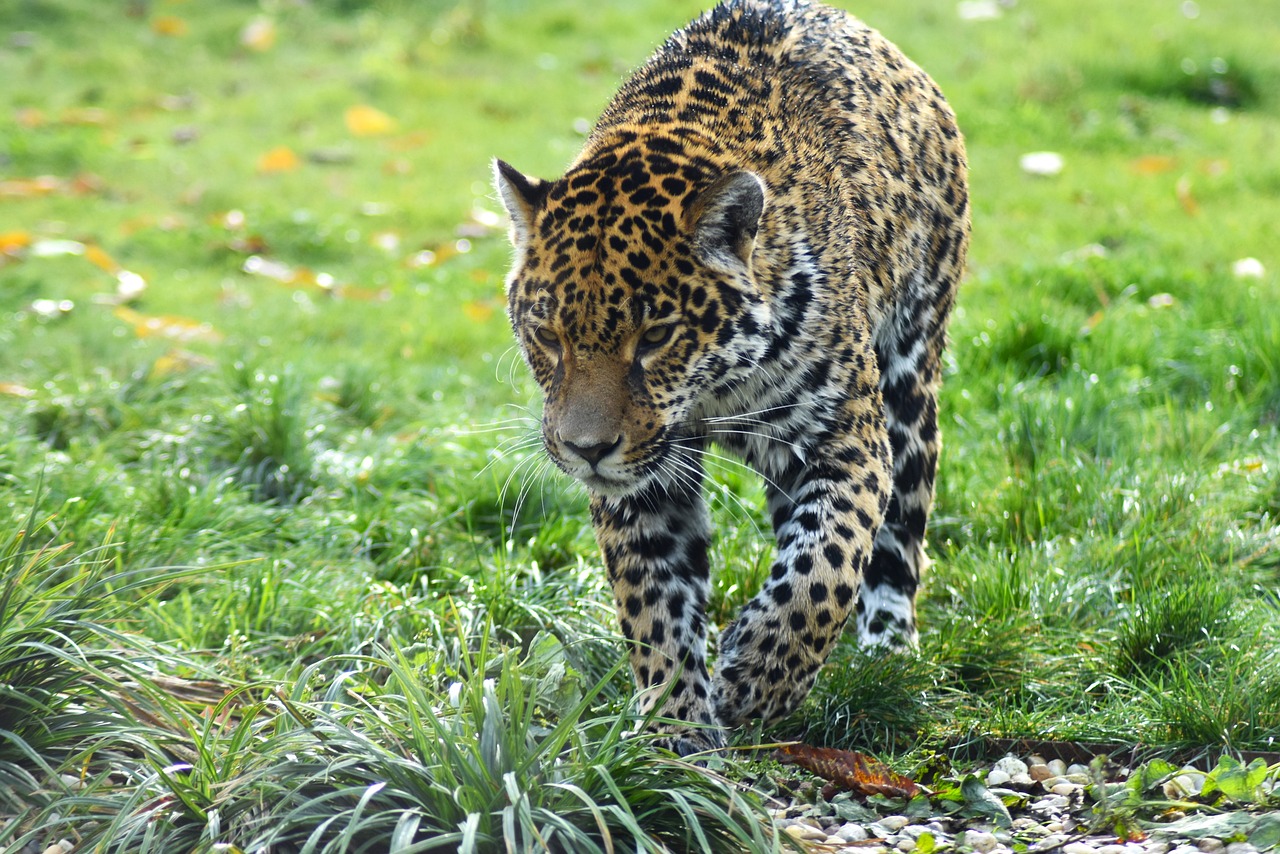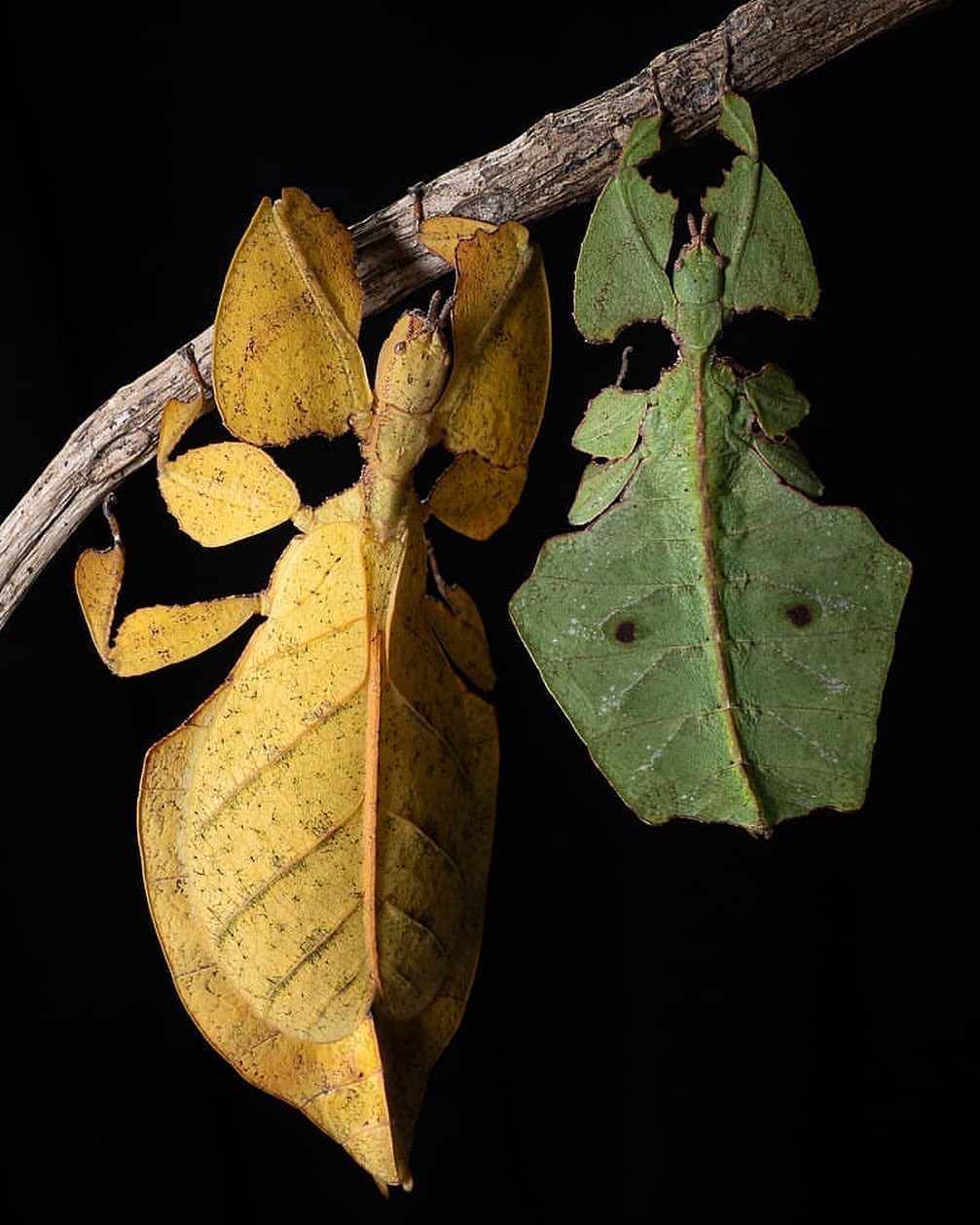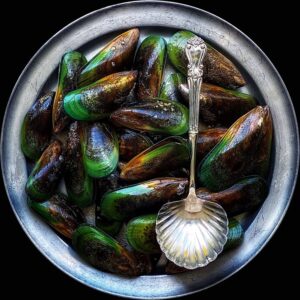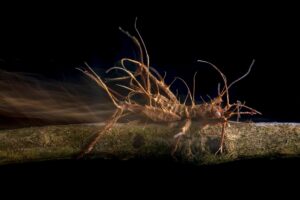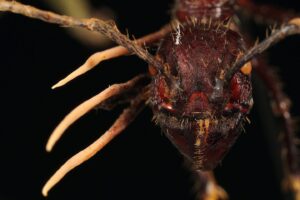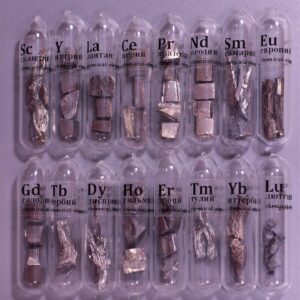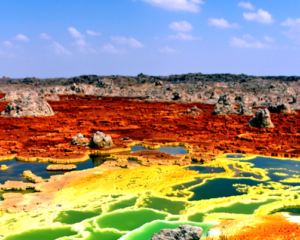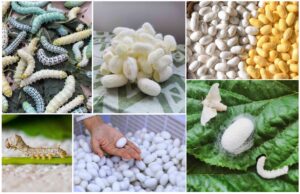 Pin
Pin Pink Orchid Mantis / Image by Fate Rising
Now, I’ve spent a fair amount of time observing the natural world, and I can tell you with some confidence that Mother Nature generally prefers earth tones. Browns, greens, the occasional sensible gray—colors that help a creature blend in and avoid becoming somebody else’s dinner. So when an animal shows up wearing pink, you have to wonder what sort of evolutionary gamble it’s making, or what kind of confidence it possesses.
The thing about pink animals is that they’re not just rare—they’re downright peculiar in the best possible way. Some of these creatures earned their rosy complexion through diet, which strikes me as similar to how some folks turn orange from eating too many carrots, only more flattering. Others were born into it through genetic circumstances beyond their control. And a select few wear pink as deliberately as a cardsharp wears a clean white shirt—it serves a purpose, even if that purpose isn’t immediately obvious to us mere observers. What follows is a collection of twelve such creatures, each one proving that nature’s palette is considerably more adventurous than we give it credit for.
Table of Contents
1. The Flamingo—A Bird That Eats Its Way to Pink
 Pin
Pin Flamingos / Photo by Lex Maris
The flamingo might be the most honest creature on this list, because it wears exactly what it eats, and it doesn’t apologize for it. These long-legged birds aren’t born pink at all—they hatch looking about as gray and unremarkable as a rain cloud. But then they start eating, and what they eat are tiny organisms like algae and shrimp that contain carotenoid pigments. Those pigments work their way through the flamingo’s system and eventually settle into their feathers, turning them that distinctive shade of pink that makes every zoo visitor stop and stare.
The deeper the pink, the healthier and better-fed the flamingo, which means in flamingo society, being pink isn’t just attractive—it’s a status symbol.
Now here’s where it gets interesting: a flamingo that doesn’t get enough of the right food will actually fade to white or pale gray, like an old photograph left in the sun too long. This makes their color a kind of honest advertisement of their dining habits and overall fitness. The males with the pinkest feathers tend to attract more mates, which makes perfect sense when you consider that bright pink essentially announces “I’m excellent at finding food, and I’m healthy enough to show it off.” It’s nature’s version of peacocking, except instead of fancy tail feathers, they’ve got a full-body glow that says they know where all the best shrimp buffets are located.
2. The Pink Dolphin—When Rivers Run Rosy
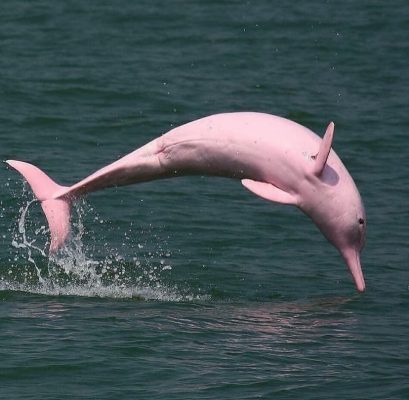 Pin
Pin Pink Dolphin / Photo by Ocean Preservation
The Amazon river dolphin, also called the boto, presents one of nature’s more peculiar color choices. These freshwater dolphins start life looking gray, much like their ocean-going cousins, but as they age they turn increasingly pink. Scientists believe this happens because these dolphins are remarkably active and aggressive, constantly scraping against river rocks and each other during their enthusiastic social lives.
All that roughhousing causes their skin to scar, and the scar tissue, combined with blood vessels close to the surface, creates that pink flush. It’s rather like they’re blushing permanently from all the excitement of being a dolphin.
The males tend to be pinker than the females, which supports the theory that their color comes from battle scars and general rowdiness. These dolphins live in murky river water where visibility is poor anyway, so being pink doesn’t put them at any particular disadvantage. In fact, local legends in the Amazon suggest the pink dolphins possess magical powers and can transform into handsome men to seduce young women, though I suspect these stories say more about human imagination than dolphin capabilities. What’s certain is that seeing a genuinely pink dolphin surface in a chocolate-brown river ranks among the stranger sights nature has to offer, and it tends to make people question whether they’ve been out in the sun too long.
3. The Roseate Spoonbill—Pink Feathers With a Purpose
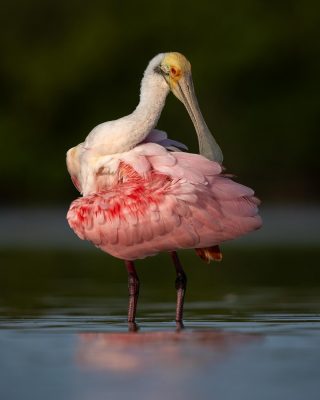 Pin
Pin Roseate Spoonbill—Pink / Photo by Nate Arnold
The roseate spoonbill looks like somebody took a flamingo and gave it a spatula for a beak, then decided that wasn’t strange enough and added bright pink wings for good measure. These wading birds share the flamingo’s secret to staying pink—they get their color from the crustaceans they filter out of shallow waters using those peculiar spoon-shaped bills. The carotenoids in their diet don’t just make them pretty; they actually help protect the birds’ cells from damage and boost their immune systems. So being pink isn’t mere vanity—it’s a sign of good health and a diet rich in exactly what a spoonbill needs to thrive.
What strikes me as particularly clever about the spoonbill’s pink plumage is how it functions during breeding season. The brightest, most vibrant birds are the ones that attract mates most successfully, because that shocking pink communicates fitness and foraging skill without the bird having to say a word. A pale spoonbill is either young, sick, or a poor hunter, and potential mates can spot the difference from quite a distance. These birds gather in colonies along coastal marshes and wetlands, and when a whole flock of them takes flight at once, the sky fills with enough pink to make you wonder if you’ve accidentally wandered into a painting. It’s one of those sights that makes you grateful nature occasionally abandons subtlety in favor of spectacle.
4. The Pink Fairy Armadillo—A Creature That Sounds Made Up
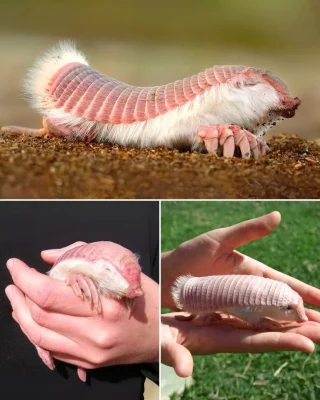 Pin
Pin Pink Fairy Armadillo / Photo by Darcey Lewis
If you’ve never heard of the pink fairy armadillo, I don’t blame you for being skeptical that such a thing exists. This peculiar little creature looks like someone tried to design the world’s smallest armadillo, gave up halfway through the armor plating, and then dipped the whole thing in strawberry milkshake. Native to central Argentina, it measures only about five inches long and spends most of its life underground, which explains why so few people have ever seen one in person. The pink color comes from blood vessels visible through its thin skin, which covers its back and sides while a pale shell protects its rear end. It’s built like a tiny pink bulldozer with fur, and it uses that design to burrow through sandy soil with remarkable efficiency.
The pink fairy armadillo’s color serves a practical purpose beyond making it look like an escapee from a fantasy novel. Because it lives underground where temperature regulation matters considerably, having blood vessels close to the skin surface helps it dump excess heat when necessary. The creature is so adapted to subterranean life that it rarely surfaces, and when it does, it’s usually by accident or because something has gone terribly wrong with its tunnel system. Scientists know remarkably little about these animals because they’re nearly impossible to study in the wild and they don’t survive well in captivity. What we do know is that this pink, fuzzy, armored oddity represents one of nature’s more creative solutions to desert living, even if it looks like something a child might have dreamed up after too much birthday cake.
5. The Pink Katydid—A Genetic Fluke That Stands Out
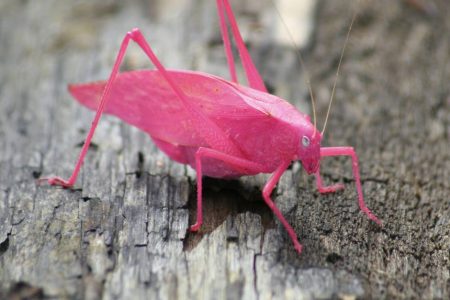 Pin
Pin Pink Katydid / Photo by TJ’s Garden
Most katydids possess the good sense to be green, which serves them well when you’re an insect trying to hide among leaves and avoid becoming bird food. But every so often, nature deals out a genetic hand that produces a pink katydid, and that particular insect has drawn a rather short straw in the survival lottery. This pink coloration comes from a condition called erythrism, which is essentially the opposite of albinism. Instead of lacking pigment, these katydids produce too much of a particular red or pink pigment while failing to produce the green that would normally keep them camouflaged. The result is an insect that looks like it wandered into the wrong paint store and decided to make the best of a bad situation.
Now, you might think being bright pink would doom a katydid to a brief and unhappy life, and you’d mostly be right. These insects are exceptionally rare, not because the genetic mutation is uncommon, but because most pink katydids get spotted and eaten before they can reproduce. The few that survive long enough to be photographed become minor celebrities on the internet, where people marvel at their bubble-gum coloring and generally impractical approach to existence. Yet they keep appearing in nature, generation after generation, which tells us that the gene responsible occasionally slips through despite the obvious disadvantages. It’s a reminder that evolution isn’t always about perfection—sometimes it’s about rolling the dice and seeing what happens, even if what happens is an insect that glows like a neon sign in a forest full of hungry birds.
6. The Pink Orchid Mantis—Camouflage as High Art
 Pin
Pin Pink Orchid Mantis / Image by Fate Rising
The orchid mantis practices deception at a level that would impress a professional con artist. This insect doesn’t just hide among flowers—it pretends to be one, and it does so with such conviction that actual pollinators mistake it for the real thing and fly right into its waiting arms. The mantis sports various shades of pink and white, with leg lobes that mimic flower petals and a body shape that looks more botanical than insect. It sits motionless on orchids and other pink flowers in the rainforests of Southeast Asia, waiting for bees, butterflies, and other insects to land on what they believe is a lovely place to gather nectar. By the time they realize their mistake, it’s generally too late to do much about it.
What makes this mantis particularly devious is that it doesn’t simply blend in with flowers—research suggests it actually attracts more pollinators than real flowers do, because it reflects ultraviolet light in ways that insects find irresistible. The mantis has essentially turned itself into a better advertisement than the genuine article, which is both impressive and slightly horrifying if you happen to be a bee. The pink coloration isn’t just for show; it’s a calculated hunting strategy that’s been refined over countless generations. Female orchid mantises are larger and pinker than males, likely because they need to catch more prey to support egg production. Watching one of these creatures hunt is like witnessing a magic trick performed in slow motion—you know something dishonest is happening, but the execution is so elegant you can’t help but admire the craftsmanship.
7. The Pink Slug—Australia's Neon Mountain Dweller
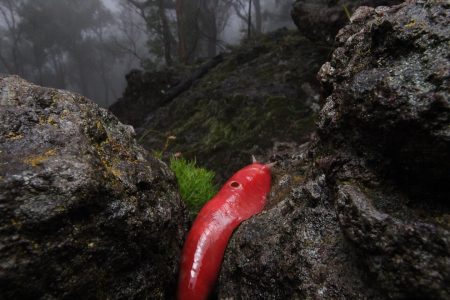 Pin
Pin Pink Slug / Photo by Tyler Monachino via Flickr
Mount Kaputar in New South Wales plays host to a slug that looks like someone took a highlighter to it and got a bit carried away. This particular species grows up to eight inches long and displays a hot pink color so intense it practically glows against the dark forest floor. Scientists believe these slugs evolved their shocking color during a period millions of years ago when Australia was wetter and cooler, and Mount Kaputar was covered in rainforest. As the climate dried out and the forests retreated, these slugs found themselves isolated on this single mountain, where they continued evolving in their own peculiar direction without much outside influence. The pink coloration likely serves no particular survival purpose now, which makes it even more remarkable that they’ve kept it all this time.
These slugs emerge during rainy periods and at night, when they cruise across the forest floor eating moss and mold with the confidence of creatures that have no natural predators worth worrying about. The pink color might actually be a warning to potential predators that they taste terrible, though this theory remains somewhat speculative since not many animals seem interested in eating them regardless. Local hikers occasionally stumble across dozens of these pink slugs moving across the trail like a slow-motion invasion of giant gummy worms, and the sight tends to stop people in their tracks. It’s the kind of thing that makes you realize how much strange and wonderful biology exists in isolated pockets around the world, quietly going about its business while looking absolutely ridiculous by conventional standards.
8. The Axolotl—The Smiling Salamander That Never Grew Up
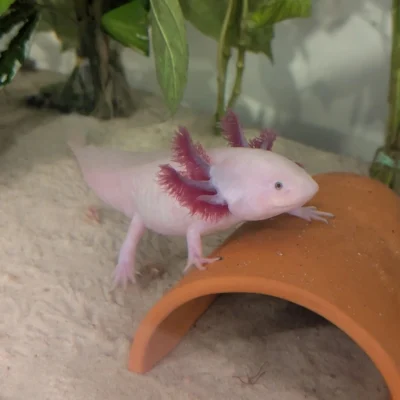 Pin
Pin Axolotl / Photo by Sravan
The axolotl possesses one of those faces that looks like it’s permanently delighted about something, with external gills that fan out like fancy feather boas and a mouth that curves upward in what appears to be a perpetual grin. While these Mexican salamanders come in several colors, the pink or leucistic variety has become something of an icon in the pet trade and scientific research.
These pale pink specimens aren’t actually pink in the way a flamingo is pink—their color comes from the absence of dark pigments combined with blood vessels showing through translucent skin, creating that soft rosy glow. It’s the same reason some people’s ears look pink when light shines through them, only the axolotl’s entire body operates on this principle.
What makes the axolotl truly peculiar isn’t just its color but its stubborn refusal to grow up properly. Most salamanders start life in water with gills, then metamorphose into land-dwelling adults with lungs. The axolotl reached a certain point in its evolutionary history and decided that the juvenile phase was working out fine, so why change things? This condition, called neoteny, means adult axolotls keep their gills and stay aquatic their entire lives, even while developing reproductive capabilities. They’re essentially permanent teenagers who can have children, which is either a brilliant evolutionary strategy or proof that nature has a stranger sense of humor than most people credit it with. These salamanders were once common in the lakes around Mexico City, but habitat destruction has made them critically endangered in the wild, though captive breeding programs have kept the species going strong in laboratories and aquariums worldwide.
9. The Pink Robin—A Tiny Bird With a Bold Chest
 Pin
Pin Pink Robin / Photo by Darren Stephens
The pink robin of southeastern Australia presents itself as a study in contrasts, with males sporting a breast so vividly pink it looks like someone applied watercolor paint with an unsteady hand. The rest of the bird remains sensibly dark gray or black, which makes that splash of rosy color across its chest all the more striking when you spot one flitting through the understory of wet forests.
Unlike the flamingo or spoonbill, the pink robin doesn’t acquire its color through diet—it’s born with pigments already programmed into its genetic code, much like cardinals come red and bluebirds come blue. The pink serves as a breeding advertisement, telling female robins that here stands a male worth considering, though exactly why females find pink attractive remains one of those questions ornithologists debate over coffee.
These birds measure barely four inches long and spend most of their time in the dimmer parts of the forest, where they hunt insects among the leaf litter and lower branches. The pink chest catches whatever filtered sunlight makes it through the canopy, creating little flashes of color that help females locate males during breeding season. Outside of that season, the males become remarkably shy and quiet, as if embarrassed by their own flamboyance once the need for it has passed. The pink robin population has declined somewhat due to habitat loss and changed fire patterns, but they still persist in pockets of suitable forest where old trees and dense understory provide the conditions they prefer. Spotting one requires patience and a willingness to search through gloomy forest areas where most brightly colored birds would have the good sense not to advertise themselves, which perhaps explains why the pink robin can afford such boldness—it lives where few predators bother to look.
10. The Pink Grasshopper—Another Roll of the Genetic Dice
 Pin
Pin Pink Grasshopper / Photo by Darren Stephens
Pink grasshoppers fall into much the same category as their katydid cousins—they’re genetic accidents that evolution probably didn’t intend but occasionally tolerates anyway. These insects normally come in shades of green or brown, colors that serve them well when you’re trying to disappear into grass and vegetation while countless birds scan the landscape for exactly your shape and size. The pink ones result from that same erythrism condition, where the usual pigment production goes sideways and produces something flashy instead of something sensible.
Finding one requires either exceptional luck or spending considerable time looking through fields and meadows, because most pink grasshoppers don’t survive long enough to become common.
The few pink grasshoppers that make it to adulthood do so through a combination of fortune and circumstance—perhaps they hatched in an area with fewer predators, or maybe they spent enough time in pink flowers that their color provided accidental camouflage. Some specimens appear more orange-pink while others lean toward bubble-gum shades, depending on exactly which pigments their bodies decided to overproduce. Entomologists occasionally receive excited reports from people who’ve spotted these rare insects, usually accompanied by photographs taken from every possible angle, because the finders understand they’ve witnessed something genuinely uncommon. The pink grasshopper serves as a useful reminder that nature’s color palette sometimes produces variations that make no practical sense whatsoever, yet these creatures persist in appearing, generation after generation, like nature’s way of testing whether anyone’s paying attention to the details.
11. The Pink Handfish—A Walker, Not a Swimmer
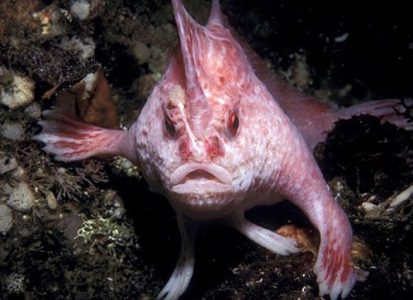 Pin
Pin Pink Handfish / Photo by Aritzbeth Gallardo
The pink handfish might be the strangest entry on this list, and that’s saying something considering we’ve already covered pink slugs and permanently juvenile salamanders. This peculiar creature lives in the waters off Tasmania and has essentially given up on swimming in favor of walking along the ocean floor using its pectoral fins like stubby little hands. The pink coloration comes from its natural pigmentation, though individual fish vary from pale peachy tones to deeper rose shades depending on their specific habitat and genetics. Scientists didn’t even know this species existed until 1999, and current estimates suggest fewer than a hundred individuals remain in the wild, making it one of the rarest fish on Earth and certainly one of the pinkest.
The handfish’s pink color might help it blend in with certain types of rocky substrate and coral, though given how rare these fish have become, it’s difficult to say whether their coloration ever provided much survival advantage. They’re small fish, growing only to about four inches long, and they move with a peculiar shuffling gait that makes them look like they’re perpetually annoyed about having to walk everywhere. The species faces threats from habitat degradation, pollution, and invasive sea urchins that destroy the spawning sites handfish need to reproduce. Conservation efforts are underway, but saving a fish that barely anyone knew existed until recently presents obvious challenges. The pink handfish represents one of those evolutionary experiments that resulted in something so specialized and unusual that it thrived in obscurity for millennia, only to find itself struggling now that human activity has altered its small corner of the ocean.
12. The Pink Sea Star—A Starfish That Chose Subtlety
 Pin
Pin Pink Star Fish / Photo by Karen Gowlett-Holmes
The pink sea star doesn’t announce itself with neon brightness like some of the other creatures we’ve discussed, but it deserves recognition nonetheless for its soft, coral-pink coloration that makes it look like a piece of living watercolor art. Found along the Pacific coast from Alaska to California, these starfish inhabit rocky shores and tide pools where their gentle pink hue helps them blend surprisingly well with coralline algae and pink-tinted rocks. The color comes from pigments in their skin called carotenoids, similar to what colors flamingos, though sea stars produce some of these compounds themselves rather than acquiring them entirely through diet. Individual specimens range from pale peachy shades to deeper rose tones, and some even sport orange or purple highlights depending on their particular genetic makeup and local environment.
What makes the pink sea star particularly interesting is how it balances being noticeable enough to warn predators while remaining camouflaged enough to ambush prey. These starfish feed primarily on mussels, barnacles, and snails, which they pry open using hundreds of tiny tube feet and remarkable patience. The pink coloration may serve as a mild warning that they’re not particularly palatable, though this doesn’t stop sea otters and some seagulls from eating them when food runs scarce. These sea stars can live for over twenty years and regenerate lost arms with impressive efficiency, which suggests that being pink hasn’t handicapped them too severely in the survival department. Watching one slowly make its way across a tide pool, all five arms working in mysterious coordination, you get the sense that this creature knows exactly what it’s doing and has been doing it successfully for a very long time, pink or otherwise.
FAQs
Pink offers poor camouflage in most environments, making pink animals easy targets for predators. Evolution generally favors colors that help creatures survive, so pink only persists when it serves a purpose or occurs in species with few natural threats.
It depends on the species. Flamingos and spoonbills can lose their pink if they don’t eat the right foods, while pink dolphins get pinker with age. Genetically pink animals like pink robins keep their color regardless of diet or environment.
Not all, but many are rare or threatened. Pink handfish are critically endangered, and pink fairy armadillos face habitat loss. However, flamingos and some dolphin populations remain stable, proving pink can work when conditions are right.
Some species like axolotls are common in captivity and make suitable pets with proper care. However, most pink animals, particularly wild ones like pink dolphins or handfish, are protected by law and would suffer tremendously outside their natural habitats.
Three main causes exist: diet-derived pigments (flamingos), visible blood vessels through pale skin (axolotls), or genetic mutations affecting pigment production (pink katydids). Each results in pink coloring through entirely different biological mechanisms.

